Lewis Winch Portable Chainsaw Winch Review
- February 15, 2024
- 0 comment
In the world of outdoor and forestry equipment, the Lewis Winch 400 MK2 stands out as a remarkably versatile and powerful tool. Its ability to pull up to 4,000 lbs in a straight line and up to 8,000 lbs using a Lewis Winch Snatch Block sets it apart in the realm of portable winching solutions. This review dives into the features, benefits, and practical applications of the Lewis Winch, highlighting why it might just be the addition you need for your outdoor toolkit.
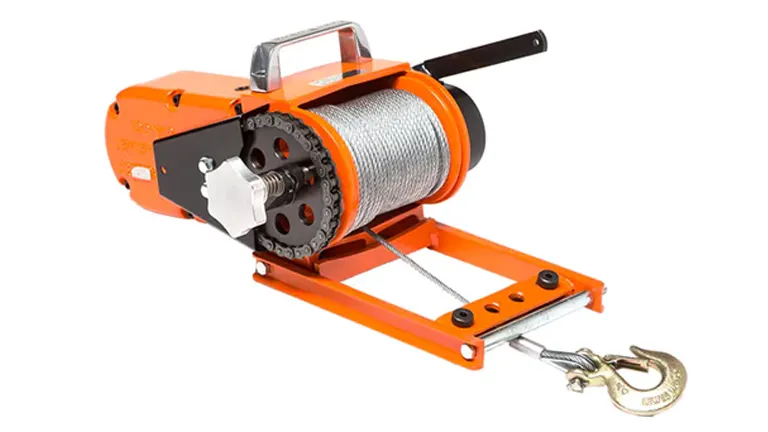
Unmatched Versatility and Power
The Lewis Winch 400 MK2’s portability is a game-changer for anyone who needs reliable pulling power in remote or inaccessible locations. Powered by a gas-driven chainsaw, it eliminates the common problem faced by electric winches: battery drain. This means you can rely on the Lewis Winch for extended periods without worrying about losing power when you need it most.
Check this out Lewis Winch Lifts Massive Log into Truck!
Durable and Lightweight Design
Constructed from rugged cast-aluminum alloy housing, the Lewis Winch combines strength with lightness.
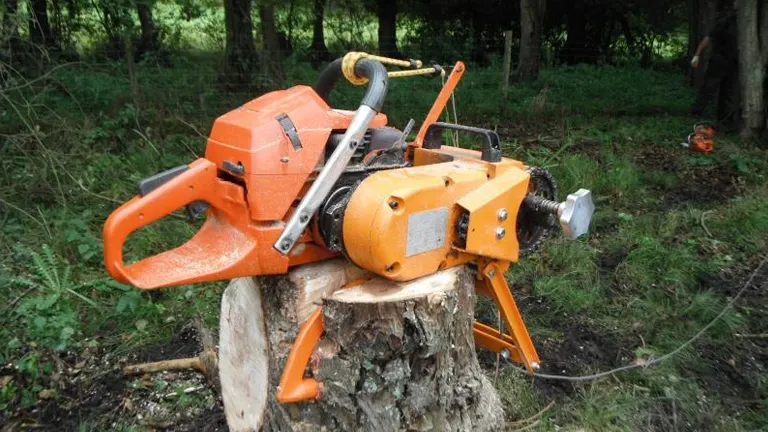
This makes it not only easy to transport but also ensures it can withstand the harsh conditions often encountered in outdoor environments. The oil-bathed steel gears are designed for years of trouble-free service, even under the most demanding use.
Easy to Use and Adapt
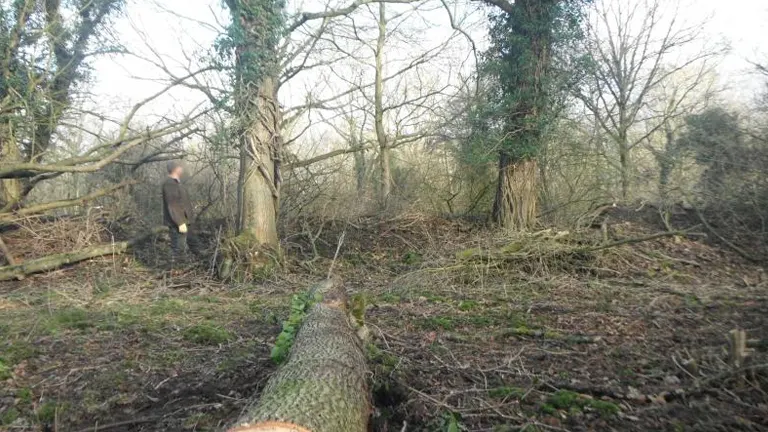
Included with the Lewis Winch are a 150-foot long 3/16″ galvanized aircraft cable with a safety hook, a Direct Drive Adaptor Kit, and a Universal Adaptor Kit. These accessories make it adaptable to nearly all chainsaws, allowing for easy attachment and removal. The winch’s variable line speed of 60 to 80 ft/min makes it suitable for a variety of pulling tasks, from vehicle recovery to moving heavy logs or equipment.
Practical Applications in the Field

One of the most praised aspects of the Lewis chainsaw winch attachment is its incredible pulling power. Whether you’re pulling a game up from the bottom of a ravine or getting your truck unstuck from mud, the Lewis Winch provides the muscle needed for the job. Its capacity to work around corners and at angles, without the risk of draining a vehicle’s battery, further underscores its utility in complex recovery or hauling tasks.
Thoughtful Features for Enhanced Usability
The Lewis Winch’s design includes a clutch and brake system for better control during winching operations. The ability to shorten the cable for ease of handling, and the introduction of a new trailer mount that anchors the winch to any vehicle using a quick-connect system, are thoughtful features that enhance its usability. This allows for an even winding of the cable across the spool, making the process smoother and more efficient.
If you are having a hard time assembling the Lewis Winch, Here are the Lewis Winch instructions.
Pros and Cons of Lewis Winch Portable Chainsaw
Pros
- The Lewis Winch 400 MK2’s ability to attach to almost any chainsaw via the Universal Adaptor Kit is a game-changer. It means I can turn my chainsaw into a powerful winching machine, making it incredibly versatile for a wide range of tasks, from pulling down trees to vehicle recovery.
- Its lightweight and compact design means I can take it anywhere. Whether I’m deep in the forest or stuck in a muddy field, the Lewis Winch is always part of my gear. Its portability is a massive plus for someone like me who ventures into remote locations.
- With up to 4,000 lbs of pulling power in a straight line and double that with a snatch block, I’ve yet to encounter a situation it couldn’t handle. This power, combined with the reliability of a gas-powered chainsaw, means I can tackle almost any challenge without fear of a drained battery.
- Constructed from rugged cast-aluminum alloy and featuring oil-bathed steel gears, this winch is built to last. It’s reassuring to know I have a tool that withstands the harsh conditions often encountered in the great outdoors.
Cons
- While the winch’s reliance on a chainsaw for power is largely a benefit, it can also be a drawback. If my chainsaw is out of commission, so is the winch. It requires me to keep my chainsaw in top working condition, which is an added responsibility.
- Getting the hang of properly setting up and using the winch, especially with the snatch block for doubled pulling power, took some time. For those not mechanically inclined, there might be a bit of a learning curve.
- Winding the cable evenly across the spool, especially after cutting it to a shorter length for easier handling, can be a bit tedious. While the process ensures efficiency and safety, it does require patience and practice.
- Since the winch is powered by a gas chainsaw, operating it means dealing with the noise and exhaust fumes associated with gas engines. In sensitive environments or enclosed spaces, this could be a consideration.
Lewis Winch Evolution
Testimonies of the Lewis Winch
Scotty
“Having both sold and used the Lewis Winch for over two decades in the challenging terrains of Alaska and Oregon, I’ve witnessed firsthand its exceptional durability and the company’s commitment to service. It’s crucial to differentiate between the genuine Lewis Winch and knockoffs, which lack the quality and resilience of the original. The real Lewis Winch stands unmatched in performance and reliability.”
Steve
“Initially, I thought the bearings seized up due to a lack of grease, but I realized the issue was the absence of a spacer between the chain sprocket and bearing. This oversight, while minor, underscores the importance of attention to detail in design. A simple fix with a bronze washer could significantly enhance durability and user satisfaction.”
Steven
“As an avid hunter, the weight of the Lewis Winch posed a challenge, and the universal fit bar heated up dangerously fast. Despite these issues, the winch’s power is undeniable. I’m taking steps to customize my winch for greater resilience. It’s a testament to the Lewis Winch’s potential, urging a closer look at its design for future improvements.”
Tracy Hoff
“Since adding the Lewis Winch to my toolkit in 2021, its versatility has been a game-changer. From rescuing a vintage Chevy to pulling game from difficult terrains, the winch has proven invaluable. It’s an investment that pays dividends in efficiency and capability, making it a staple in my outdoor adventures.”
Scott McLagan
“My Lewis Winch, acquired in 2004, has been a reliable partner in countless outdoor tasks. Its robust build and consistent performance, even after years of use, illustrate the quality craftsmanship of the original Lewis Winch. It’s a safe, dependable tool that has significantly enhanced my ability to manage challenges in remote environments.”
These testimonials from real users of the Lewis Winch illuminate the critical aspects of its design, functionality, and the importance of opting for the genuine product. From Scotty’s emphasis on authenticity to Steve’s and Steven’s constructive criticism, Tracy Hoff’s praise of its versatility, and Scott McLagan’s testament to its long-term reliability, it’s clear that Lewis Winch is a remarkable tool with room for enhancement. It serves as a powerful reminder of the winch’s value to those who rely on it to overcome the challenges posed by nature and outdoor work.
Conclusion
The Lewis Winch 400 MK2 is more than just a portable chainsaw winch; it’s a reliable partner for anyone who ventures into the outdoors, whether for work or recreation. Its combination of power, versatility, and durability makes it an invaluable tool for forestry work, hunting, off-roading, and more. For those who demand the best in terms of performance and reliability, the Lewis Winch 400 MK2 is undoubtedly a top contender. Whether you’re hoisting a game, recovering vehicles, or moving heavy equipment, the Lewis Winch is designed to make the task at hand simpler and more manageable.
FAQs
- Can the Lewis Winch 400 MK2 be operated by a single person, or does it require a team?
Absolutely, the Lewis Winch 400 MK2 is designed for ease of use and can be efficiently operated by a single person. This makes it perfect for solo adventurers, hunters, or anyone who might find themselves needing pulling power in remote locations. - How does the Lewis Winch attach to different models of chainsaws?
The Lewis Winch comes with a Universal Adaptor Kit, allowing it to mount on virtually any chainsaw. You simply remove the cutting bar and chain, then attach the winch using the adapter, making it a versatile tool compatible with your existing equipment. - Is it possible to increase the pulling capacity beyond 8,000 lbs with additional snatch blocks?
While using one snatch block doubles the pulling capacity to 8,000 lbs, adding more snatch blocks can theoretically increase the capacity. However, it’s essential to consider the physical limitations of the winch, the cable, and the chainsaw power, ensuring safe operation within the recommended limits. - What maintenance does the Lewis Winch require to ensure longevity and reliability?
Regular maintenance includes cleaning the winch after use, especially in muddy or dusty conditions, checking the cable for wear or damage, lubricating the moving parts, and ensuring the oil bath for the gears is maintained. These simple steps can significantly extend the life and performance of your Lewis Winch. - Can the Lewis Winch be used for vertical lifting, or is it strictly for horizontal pulling?
The primary design of the Lewis Winch is for horizontal pulling. While it may have the capacity to lift vertically, this is not recommended without proper equipment and safety measures in place due to the risks involved with vertical lifting. - How does the variable line speed of the winch affect its pulling power?
The variable line speed, ranging from 60 to 80 ft/min, allows users to adjust the pulling speed based on the load and the situation. Slower speeds can be used for heavier loads to ensure control and safety, while faster speeds can be utilized for lighter loads or when quick retrieval is necessary. - What safety features are included with the Lewis Winch to prevent accidents during operation?
The Lewis Winch is equipped with a clutch and brake system, allowing for precise control over the winching process. Additionally, the safety hook on the cable ensures secure attachment to the load, and the robust construction of the winch itself is designed to withstand the rigors of heavy use. - Can the Lewis Winch be used in wet conditions, or is it susceptible to rust and corrosion?
Thanks to its rugged cast-aluminum alloy housing and oil-bathed steel gears, the Lewis Winch is built to perform in various conditions, including wet environments. However, to prevent rust and corrosion, it’s recommended to clean and dry the winch after use in such conditions. - Is it necessary to use the Lewis Winch only with a chainsaw, or can it be powered by other means? The Lewis Winch is specifically designed to be powered by a gas-driven chainsaw, which provides the necessary power and portability. While it’s tailored for chainsaw use, the winch’s design focuses on leveraging the chainsaw’s engine, making other power sources incompatible.
- How does the Lewis Winch compare to traditional electric winches in terms of environmental impact?
Unlike electric winches that rely on a vehicle’s battery and can lead to energy inefficiency and potential environmental impact, the Lewis Winch, powered by a gas chainsaw, offers a more controlled use of fuel. By only running the chainsaw when active winching is required, it minimizes unnecessary energy consumption.
We hope you found our review of the Lewis Winch 400 MK2 both informative and intriguing! Whether you’re a seasoned outdoor enthusiast or just beginning to explore the wonders of nature, we believe this tool could be a game-changer for your adventures. Do you have any experiences with the Lewis Winch, or perhaps some tips and tricks of your own? We’d love to hear from you! Share your thoughts and stories in the comments below, and let’s help each other tackle the great outdoors with confidence and ease. Don’t forget to share this review with fellow adventurers who might benefit from this incredible tool. Happy winching!

David Murray
Forestry AuthorI'm David Murry, a forestry equipment specialist with a focus on chainsaw operation. With over 13 years of experience, I've honed my skills in operating and maintaining a wide range of machinery, from chainsaws to log splitters. My passion for the outdoors and commitment to sustainable forestry drive my work, which emphasizes safety, efficiency, and staying updated with industry advancements. Additionally, I'm dedicated to sharing my expertise and promoting environmental awareness within the forestry community.


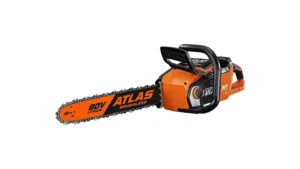
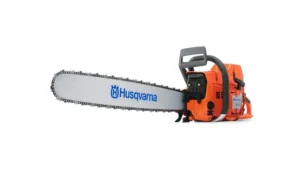
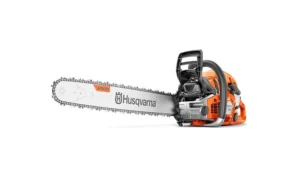
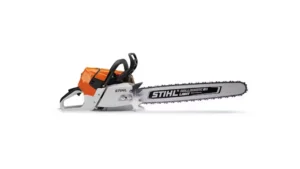
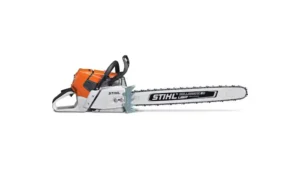

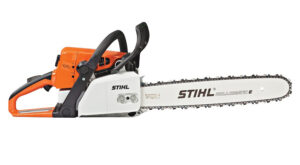
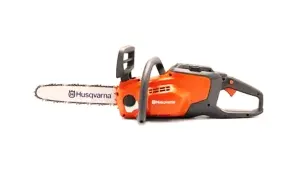

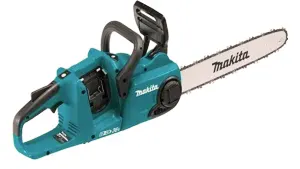

Leave your comment